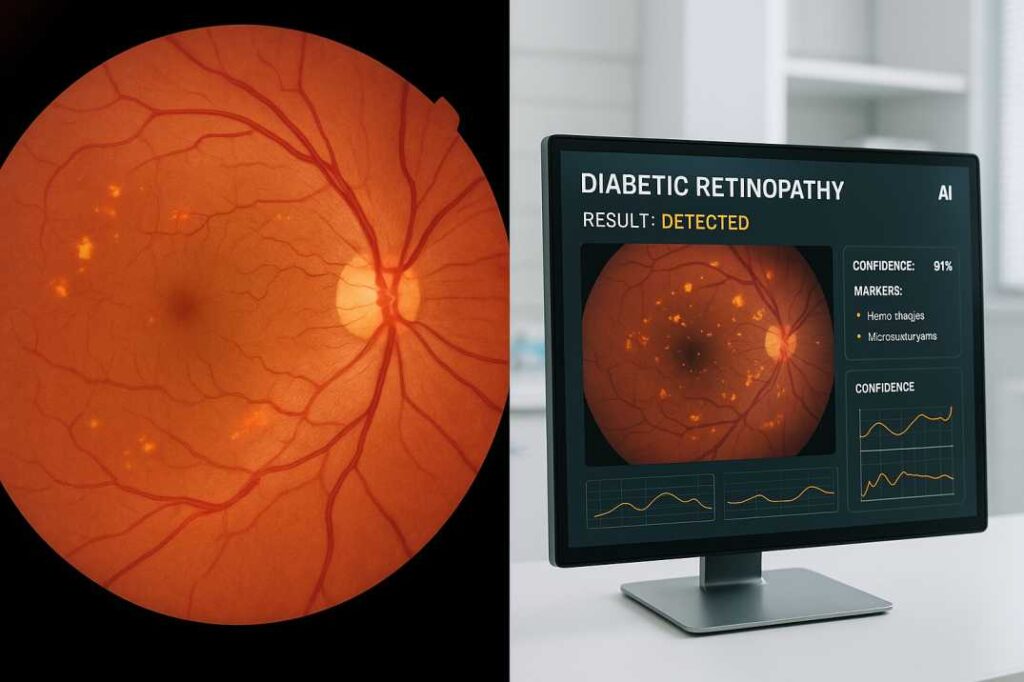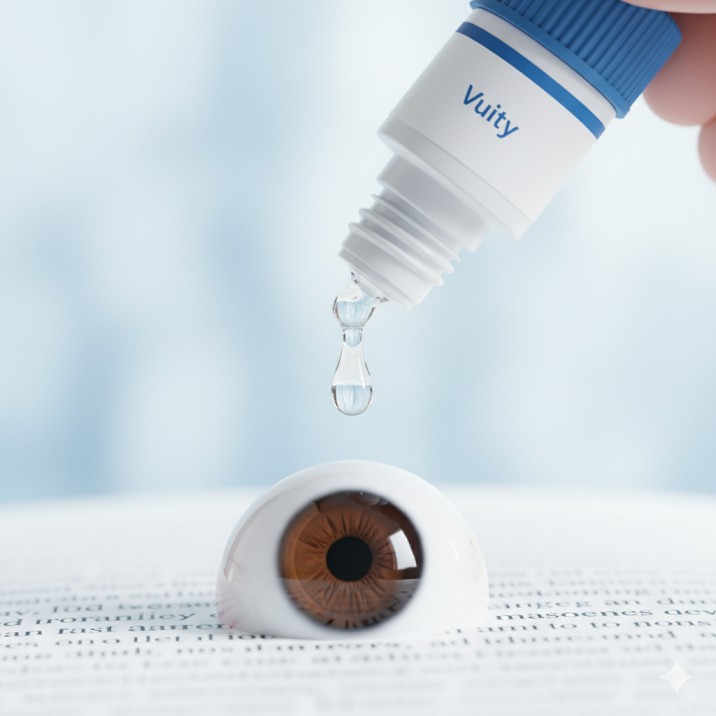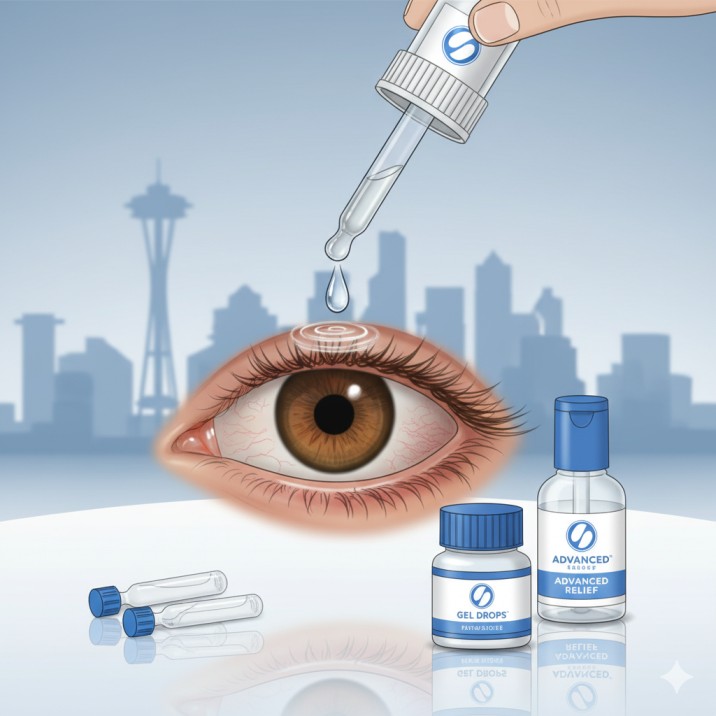Complete Guide to Medical Eye Exams & Health Detection
Bottom Line Up Front: Medical eye exams do far more than update your prescription. These comprehensive evaluations can detect serious health conditions like diabetes, high blood pressure, and neurological disorders years before symptoms appear, potentially saving your vision and your life.
When most people think about eye exams, they imagine sitting in a chair reading letters on a chart to get a new glasses prescription. But modern medical eye exams represent something far more powerful: a window into your overall health that can detect life-threatening conditions before you even know they exist.
Understanding Medical Eye Exams vs. Vision Correction
While vision correction focuses solely on determining whether you need glasses or contact lenses, medical eye exams take a comprehensive approach to your eye health and overall well-being. These examinations serve as a gateway to your overall health, using cutting-edge technology and a patient-centered approach to detect conditions that extend far beyond simple refractive errors.
The distinction matters more than you might think. Medical eye exams are performed by medical doctors specializing in diagnosing and treating diseases and conditions of the eye, using advanced diagnostic tests to detect eye diseases and abnormalities such as glaucoma, macular degeneration, cataracts, and diabetic retinopathy.
The Life-Saving Power of Early Detection
Detecting Systemic Diseases Through Your Eyes
Your eyes provide a unique, non-invasive view into your body’s vascular and nervous systems. Routine eye check-ups provide a window into your overall health, allowing for the early detection of systemic diseases such as hypertension, diabetes, and even neurological conditions like multiple sclerosis.
Recent breakthrough research has expanded this capability even further. A simple eye exam combined with powerful artificial intelligence (AI) machine learning technology could provide early detection of Parkinson’s disease, with researchers developing methods to classify the condition based on retinal vasculature.
Critical Health Conditions Detected During Medical Eye Exams
Diabetes and Diabetic Retinopathy Diabetic retinopathy, a complication of diabetes, can be diagnosed through an eye exam, with early detection being crucial for preventing vision loss. New research shows the urgency of this screening: over one-quarter (26%) of patients with diabetes who received AI-powered eye screenings tested positive for either more-than-mild or vision-threatening diabetic retinopathy.
Cardiovascular Disease: High blood pressure can cause changes in the blood vessels of the retina, which eye doctors can identify during a dilated eye exam. Companies like RetiSpec and Mediwhale are using quick standard eye scans to detect cardiovascular, kidney, and eye diseases as well as signs of neurodegeneration.
Neurological Conditions. Inflammation of the optic nerve, known as optic neuritis, can be an early sign of multiple sclerosis. The eyes can reveal changes in brain physiology that aren’t detectable through other means.
What Happens During a Comprehensive Medical Eye Exam
Advanced Diagnostic Technology
Modern medical eye exams utilize sophisticated technology that goes far beyond traditional vision testing. These exams encompass a series of vision tests used by a healthcare professional to assess the well-being of your eyes, with the primary focus being the overall health of your eyes rather than merely determining your prescription.
The comprehensive evaluation typically includes:
Dilated Pupillary Examination A dilated pupillary exam goes beyond simply checking your vision; it plays a key role in safeguarding your eye health and serves as a means to detect a range of medical conditions. This procedure allows doctors to examine the retina, optic nerve, and blood vessels at the back of your eye.
Advanced Imaging and Pressure Testing. Utilizing a microscope with intense light, examinations can provide a detailed examination of the cornea, iris, lens, and anterior chamber, while tonometry measures eye pressure to detect conditions like glaucoma.
AI-Enhanced Diagnostics Artificial Intelligence (AI) and machine learning are transforming eye exams by enhancing diagnostic accuracy and efficiency, with AI-powered tools now capable of analyzing images of the retina, cornea, and other eye structures with exceptional precision.
The Examination Process
A typical medical eye exam follows a structured approach designed to gather comprehensive health information:
- Medical History Review – Discussion of symptoms, family history, medications, and lifestyle factors
- Visual Function Testing – Assessment of visual acuity, peripheral vision, and eye movement
- Structural Examination – Detailed evaluation of all eye structures using specialized equipment
- Health Screening – Detection of systemic diseases through ocular manifestations
- Treatment Planning – Development of appropriate intervention strategies
The Science Behind Modern Eye Health Screening
Recent Research Breakthroughs
The field of medical eye examination has witnessed remarkable advances in recent years. Recent research has developed deep neural networks for automated and efficient systems for early detection and accurate grading of diabetic retinopathy severity with less time consumption.
Early FDA-approved AI systems for diabetic retinopathy can detect referable disease at 87 to 96% sensitivity and around 89% specificity, comparable to expert human graders. This technology represents a quantum leap in diagnostic capability.
Expanding Scope of Detection
AI algorithms for the interpretation of retinal images represent an innovative solution with demonstrated superior accuracy in identifying many ophthalmic and non-ophthalmic disorders, including dementia and cardiovascular disease.
The implications extend beyond traditional eye diseases. Teleretinal screening enhances diabetic retinopathy detection, improving compliance and access, especially for underserved groups, by integrating screenings into primary care settings.
Who Needs Medical Eye Exams and How Often
Risk Factors That Require Regular Monitoring
Certain risk factors may necessitate more frequent examinations, including taking prescription or nonprescription drugs with potential ocular side effects, personal or family history of ocular disease, belonging to certain racial and ethnic groups, and systemic health conditions with potential ocular manifestations.
Recommended Examination Frequency
For Adults Without Risk Factors:
- Ages 20-39: Every 2-3 years
- Ages 40-54: Every 1-2 years
- Ages 55+: Annually
For High-Risk Individuals: People with diabetes should receive eye exams annually, with more frequent examinations required if retinopathy is progressing or risk factors such as not meeting glycemic goals are present.
For Pregnant Women with Diabetes: Individuals with preexisting type 1 or type 2 diabetes should receive an eye exam before pregnancy, as well as in the first trimester, and may need to be monitored every trimester and for 1 year postpartum.
The Technology Revolution in Eye Care
Artificial Intelligence Integration
AI assists in analyzing diagnostic images and data, improving the accuracy of detecting eye conditions such as glaucoma, AMD, and diabetic retinopathy, with AI tools able to process vast amounts of data quickly.
Despite these advances, actual usage of AI screenings remains under 1% in the U.S. diabetic population, as many clinics have yet to integrate AI into routine workflows. This represents a significant opportunity for early adopters.
Telemedicine and Remote Monitoring
Telemedicine has become more prominent in eye care, allowing patients to consult with eye care professionals remotely, with virtual eye exams now possible through digital platforms. However, telemedicine cannot entirely replace in-person eye exams, as certain conditions and detailed evaluations require direct examination by an eye care professional.
Advanced Contact Lens Technology
Recent advancements in contact lenses include smart lenses with built-in sensors for monitoring eye health and lenses that can release medications directly into the eye, enhancing comfort, convenience, and treatment effectiveness.
Common Misconceptions About Medical Eye Exams
“I See Fine, So I Don’t Need an Exam”
Many serious eye diseases and systemic conditions develop without noticeable symptoms. Many eye and vision problems have no obvious signs or symptoms, so you might not know a problem exists, making early diagnosis and treatment crucial for preventing vision loss.
“Eye Exams Are Just for Vision Problems”
Comprehensive eye exams encompass more than just vision correction, taking a holistic approach to eye care and focusing on overall well-being, while evaluating eyes for potential diseases and searching for signs of chronic conditions.
“Technology Can Replace Human Examination”
While AI and digital tools enhance diagnostic capability, they complement rather than replace skilled clinical examination. The combination of advanced technology with expert clinical judgment provides the most comprehensive assessment.
The Economic Impact of Early Detection
Cost-Effectiveness of Preventive Care
Teleretinal screening is cost-effective, well-received by patients, and can significantly increase screening rates, potentially preventing vision loss. Early detection consistently proves more cost-effective than treating advanced disease.
The financial benefits extend beyond direct medical costs. Preventing vision loss maintains quality of life, work productivity, and independence – factors that represent enormous economic value to individuals and society.
Insurance Coverage Considerations
Understanding the difference between routine vision exams and medical eye exams affects insurance coverage. Vision insurance covers routine comprehensive eye examinations, but generally does not cover further medical testing, treatment, or follow-up for medical conditions discovered during the exam.
Making Medical Eye Exams Part of Your Health Routine
Preparing for Your Examination
To maximize the value of your medical eye exam:
- Compile a list of current medications and supplements
- Document any vision changes or eye-related symptoms
- Bring information about the family eye and health history
- Plan for pupil dilation effects (blurred vision for 3-4 hours)
- Consider transportation arrangements if driving will be difficult
Questions to Ask Your Eye Care Provider
- What specific tests will be performed during my exam?
- Based on my health history, what conditions should we monitor?
- How often should I schedule follow-up examinations?
- What symptoms should prompt an urgent visit?
- How do my examination results relate to my overall health?
Building a Long-Term Eye Health Strategy
Optimal eye health requires a partnership between you and your eye care provider. This includes:
- Regular examinations based on your risk profile
- Lifestyle modifications to support eye health
- Prompt attention to new symptoms or changes
- Coordination with other healthcare providers
- Staying informed about advances in eye care technology
Looking Toward the Future of Medical Eye Exams
Emerging Technologies
The future promises even more sophisticated diagnostic capabilities. Recent advances in artificial intelligence (AI) and telemedicine are transforming healthcare delivery, particularly in rural and underserved communities.
Research continues to expand the scope of what eye examinations can detect. AI-enabled testing and screening device solutions are helping disease management become more proactive across specialties to detect Alzheimer’s disease, heart disease, depression, cancer, liver disease, and more.
Accessibility and Innovation
Surveys suggest most eye care professionals see advanced technology as a competitive advantage and a clinical necessity, with about 80% of patients reportedly preferring practices equipped with modern diagnostic tools.
The integration of AI, telemedicine, and advanced imaging will continue making comprehensive eye care more accessible while improving diagnostic accuracy and treatment outcomes.
Key Resources and Research Citations
The information in this article is supported by current medical research and authoritative healthcare organizations. Here are three key resources that provide additional context on the topics discussed:
1. American Academy of Ophthalmology – Comprehensive Adult Medical Eye Evaluation Guidelines
Source: Comprehensive Adult Medical Eye Evaluation Preferred Practice Pattern® – Ophthalmology Journal, November 2020
Link: https://www.aaojournal.org/article/S0161-6420(20)31026-5/fulltext
Key Finding: “Recommended intervals between comprehensive examinations vary with age and risk factors. A thorough ophthalmic evaluation can detect common abnormalities of the visual system and its related structures as well as less common yet extremely serious issues.”
Relevance: Establishes evidence-based guidelines for medical eye examination frequency and scope, supporting the examination recommendations provided in this article.
2. Eyenuk and American Academy of Ophthalmology AI Screening Study
Source: AI-Driven Eye Disease Screening for Delaware’s Underserved Populations – Globe Newswire, October 16, 2024
Link: https://www.globenewswire.com/fr/news-release/2024/10/16/2964019/0/en/Eyenuk-Teams-with-the-American-Academy-of-Ophthalmology-to-Provide-AI-Driven-Eye-Disease-Screening-for-Delaware-s-Underserved-Populations.html
Key Finding: “In the first five months of the program at Henrietta Johnson Medical Center, over one-quarter (26%) of patients with images gradable by EyeArt tested positive for either more-than-mild or vision-threatening diabetic retinopathy.”
Relevance: Demonstrates the critical importance of comprehensive diabetic retinopathy screening and validates the statistics referenced regarding disease detection rates in asymptomatic populations.
3. American Diabetes Association – Standards of Care in Diabetes 2025
Source: Retinopathy, Neuropathy, and Foot Care: Standards of Care in Diabetes—2025 – Diabetes Care Journal, January 2025
Link: https://diabetesjournals.org/care/article/48/Supplement_1/S252/157552/12-Retinopathy-Neuropathy-and-Foot-Care-Standards
Key Finding: “Individuals with preexisting type 1 or type 2 diabetes should receive an eye exam before pregnancy as well as in the first trimester and may need to be monitored every trimester and for 1 year postpartum as indicated by the degree of retinopathy.”
Relevance: Provides current clinical guidelines for diabetic eye care and supports the examination frequency recommendations for high-risk populations discussed in this article.
Clinical Summary: Medical eye examinations function as sophisticated diagnostic instruments that extend substantially beyond traditional vision correction services. These comprehensive evaluations can identify diabetes mellitus, cardiovascular disease, neurological conditions, and additional serious health conditions years before clinical symptom manifestation, establishing them as essential components of comprehensive healthcare and preventive wellness programs. Regular systematic examinations, particularly for individuals with identified risk factors, represent among the most cost-effective preventive health interventions available in contemporary medical practice.
Your Next Steps: Taking Action for Your Eye Health
Medical eye exams represent one of the most valuable investments you can make in your health beyond simple vision correction. They offer a unique opportunity to detect serious conditions early, when treatment is most effective and least invasive.
Whether you’re overdue for an examination, experiencing new symptoms, or simply want to establish baseline health information, scheduling a comprehensive medical eye exam should be a priority. Remember that many life-threatening conditions can be detected through your eyes before they cause symptoms elsewhere in your body.
The technology and expertise available today make it possible to catch problems that would have gone undetected just a few years ago. By making medical eye exams part of your regular health routine, you’re not just protecting your vision – you’re safeguarding your overall health and quality of life.
This article provides educational information based on current medical literature and established clinical guidelines. Individual healthcare decisions should be made in consultation with qualified healthcare providers. For comprehensive medical eye examination services, contact Cannon EyeCare at our University Village or Pike Place Market locations in Seattle to discuss your specific health needs and experience evidence-based eye care that prioritizes both clinical excellence and patient-centered service.
FAQs
-
Eye exams can detect over 270 health conditions including diabetes, high blood pressure, high cholesterol, brain tumors, multiple sclerosis, and early signs of stroke.




